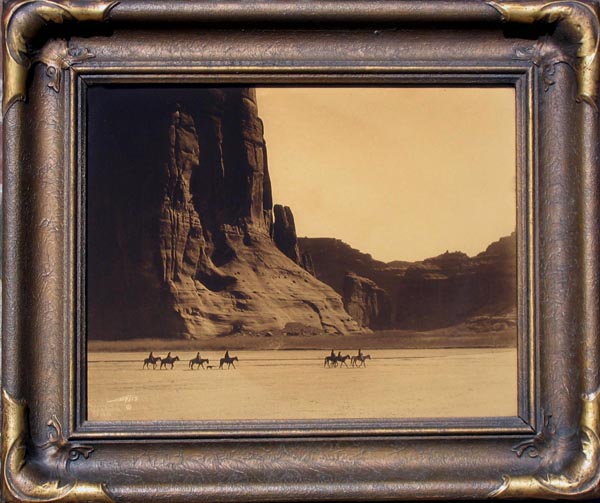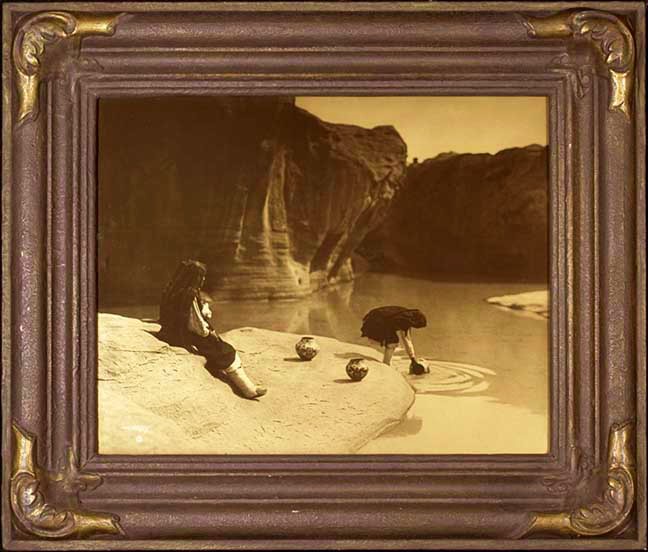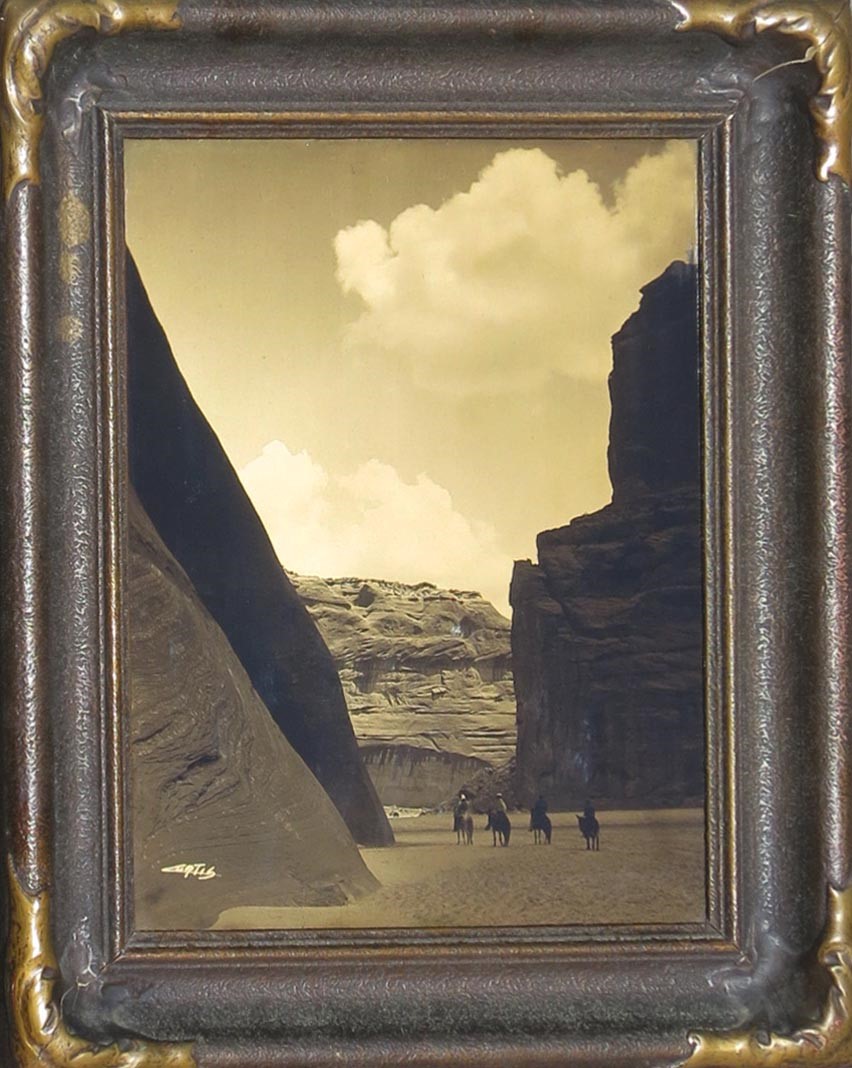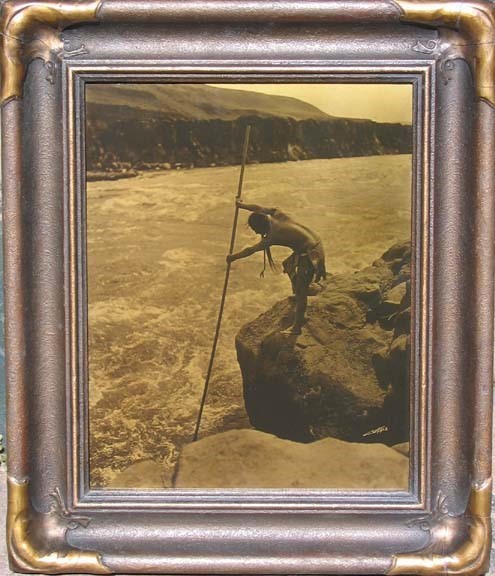Known as one of Edward Curtis’ favorite medium, he describes the medium beautifully:
“The ordinary photographic print, however good, lacks depth and transparency, or more strictly speaking, translucency. We all know how beautiful are the stones and pebbles in the limpid brook of the forest where the water absorbs the blue of the sky and the green of the foliage, yet when we take the same iridescent pebbles from the water and dry them they are dull and lifeless, so it is with the ordinary photographic print, but in the Curt-Tones all the transparency is retained and they are as full of life and sparkle as an opal.”

EDWARD CURTIS: “Canon de Chelly” 11 x 14 inches
Goldtones / Orotones / Curt-tones are rare and sought after. Comprising of less than 1% of what the artist left behind. Each example was creating by Curtis, in his own studio to help fund his larger project “The North American Indian”. In his time the goldtone medium was rarely used, and though Edward Curtis did not invent the process he created more goldtone examples than any other artist. In simple terms, a goldtone is a positive image on glass (most images are a positive image on paper).

EDWARD CURTIS: “At the Old Well at Acoma” 8 x 10 inches
The process Edward Curtis used was to take a clear plate of optical glass and spread a liquid emulsion on the surface of the plate. He then projected his negative onto the glass to create a positive image. The highlights and shadows could not be seen unless there was some type of backing on the image. He mixed a combination of banana oils and bronzing powders to create a goldtone effect, and then floated this mixture onto the dried emulsion.

EDWARD CURTIS: “Canon Del Muerto” 14 x 11 inches
The final process involved backing the glass image to so that all the chemicals bonded together. Lastly Edward Curtis framed each image in either a batwing, pie-crust, or ribbon frame. The Goldtones that have surfaced today are by far some of his most brilliant works.

EDWARD CURTIS: “The Fisherman – Wisham” 14 x 11 inches
